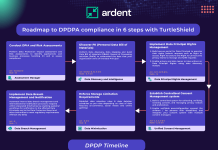Crawly Creatures Rijksmuseum, Amsterdam 30 September to 15 January 2023
WEBWIRE – Wednesday, September 28, 2022
This autumn Rijksmuseum braces itself for an invasion of ants, lizards, snakes and other assorted creatures who take over the Philips Wing for an unprecedented exhibition that explores the changing perceptions of these small animals in art and science through the ages.
Crawly Creatures culminates in a presentation of artist Tomás Saracenos Gravitational solitary semi-social solitary solitary Choreography LHS 477 (2019), a spider/web sculpture occupying an entire gallery, woven by four spider species. Saraceno and the Arachnophilia community have additionally composed An Open Letter for Invertebrate Rights (2020-ongoing) with which they call for Rijksmuseum to recognize and respect the rights of spider/webs. Throughout the duration of the exhibition, vacuum cleaners and feather dusters will be limited in several public spaces within the museum to allow for spiders at the Rijksmuseum to roam freely and weave their webs.
Against the sixth mass extinction and arachnophobias that Western monoculture has produced, we must reconnect to a symbiotic, hybrid understanding of our arachnid kin that many cultures still know and teach today. The spider/web is both model and metaphor in this task. Such acts mark an attempt to draw focus and authorship (back) onto the life-forms and life-forming processes spiders have been practicing for millennia, while moving visitors from arachnophobia to Arachnophilia by sensing new threads of interspecies connectivity.
Tomás Saraceno
The ingenuity and beauty of Tomás Saracenos creations perfectly capture what Rijksmuseum hopes to achieve with Crawly Creatures – bring art and natural history together to illuminate the evolution of our understanding of nature and rethink our relations with other animals.
Taco Dibbits, General Director Rijksmuseum
The exhibition is made possible in part by the Don Quixote Foundation through the Rijksmuseum Fonds and Stichting Thurkowfonds.
Arachnophilia at the Rijksmuseum
According to Saraceno, humans must start acknowledging ecosystems as meshworks of interdependence, by understanding ecologies as lively webs of relations across, and between species whose fates are intimately bound to one another. Gravitational solitary semi-social solitary solitary Choreography LHS 477 (2019), presented in the Crawly Creatures exhibition, functions as both model and metaphor. The hybrid spider/web invites a new understanding of our arachnid kin, recognizing the non-human worlds they represent.
An Open Letter for Invertebrate Rights (2020 -ongoing) initiates direct conversation with the Rijksmuseum to acknowledge the invertebrates the museum cohabits, works and exhibits with. Imagining renewed ways of entangling with our arachnid kin, the open letter is a call to recognize the spider/webs that did not arrive by invitation, to acknowledge those still living and those who face extinction themselves becoming curious museological relics. The Rijksmuseum does not intervene with the spiders in various public spaces for spiders to create their webs, which will be recognized as art.
Crawly Creatures Exhibition
Crawly Creatures sheds light on the changing perceptions of critters in the arts and sciences. People once associated these crawly creatures with death and the devil, but in the sixteenth and seventeenth century their beauty gripped the imagination of artists and scientists, which will be shown by works and objects of Albrecht Dürer, Wenzel Jamnitzer, Antoni van Leeuwenhoek and Maria Sibylla Merian. Now, the appreciation, has taken a new turn in recent decades with the growing realisation that these tiny animals have crucial roles in the Earths ecology and are essential to all forms of life. The disbalanced relationship between humans and other animals is critically re-examined in the exhibition through the collaboration of spider/webs with Tomás Saraceno. The symbolic power that critters such as ants hold will also be demonstrated by the installation Casa Tomada (House Taken) (2008-ongoing) by Rafael Gomezbarros.
Tomás Saraceno
Tomás Saraceno is an Argentina-born, Berlin-based artist whose projects dialogue with forms of life and life-forming, rethinking dominant threads of knowledge in the Capitalocene era and recognizing how diverse modes of being engage a multiplicity of vibrations on the Web of Life. For more than two decades, Saraceno has activated projects aimed towards fossil-fuel free futures, including Museo Aero Solar (2007) and the Aerocene Foundation (2015). Arachnophilia, an interdisciplinary, research-driven community, also emerged from the artists more than 10 years of collaboration with humans, spiders, and their webs. He has held numerous residencies including MIT Center for Art, Science & Technology (2012 ) and Atelier Calder (2010); published in Nature and PNAS; presented a TED talk; staged artistic interventions with COP20, COP21, and COP26; has lectured internationally. He has also been the subject of solo exhibitions and permanent installations at museums and institutions internationally, including The Shed, New York (2022); Palais de Tokyo, Paris (2018); Museo de Arte Moderno, Buenos. Saraceno has participated in numerous festivals and biennales, including the 17th Venice Architecture Biennale (2020) and the 53rd and 58th Venice Biennales (2009, 2019).
Images available via pressoffice@rijksmuseum.nl




